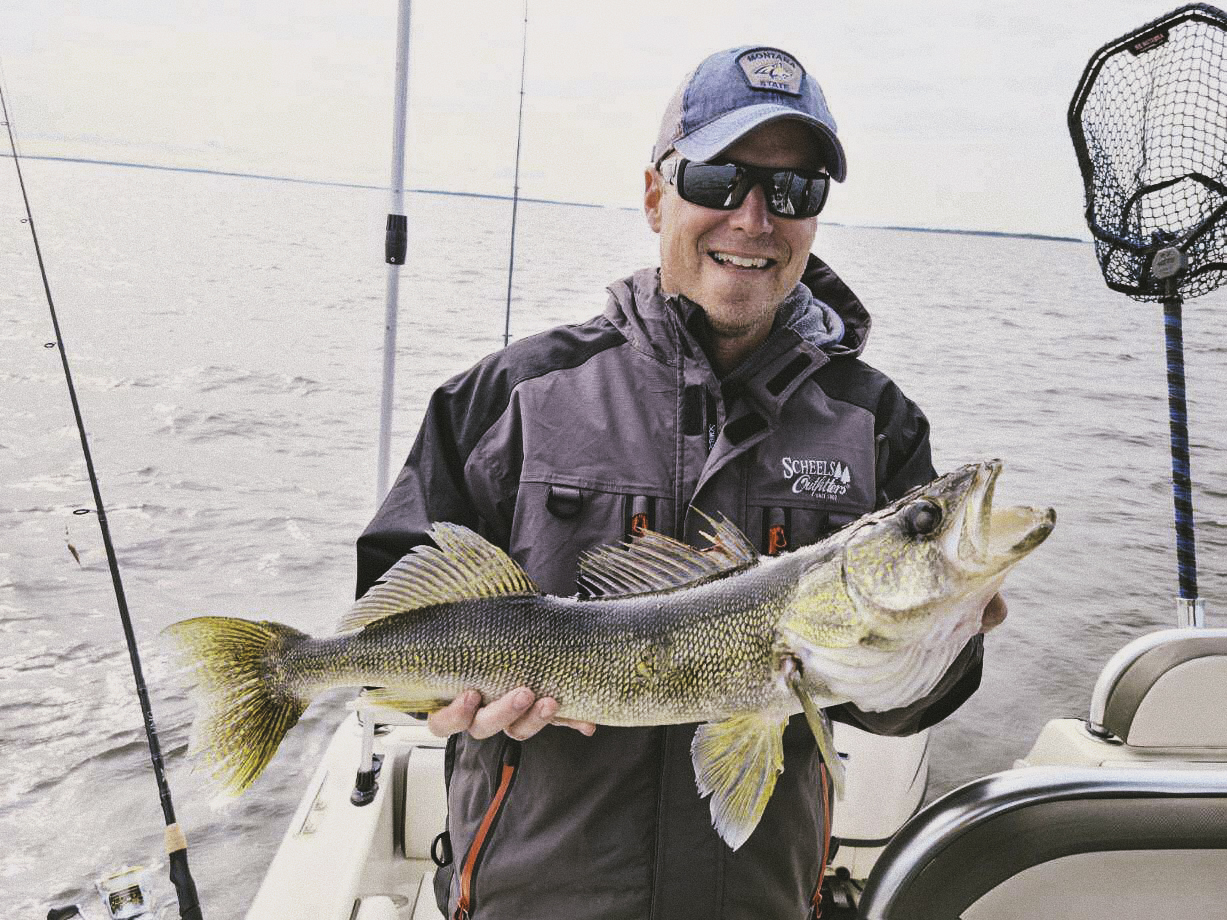FAQs
Fishing Licenses
During the winter season, our fish house rentals are in Minnesota. In the spring, summer, and fall the guides fish a mix of Minnesota and Ontario waters. Lake of the Woods is a huge lake boasting nearly one million acres and encompassing thousands of great fishing opportunities waiting for you!
Minnesota fishing licenses are available online here or by calling 888-665-4236. Ontario is available online here. Ontario also requires you to have an outdoors card along with your fishing license. Cards are not required with 1-day licenses. Proper identification is required to go into Canada and back to the United States. See the Ontario information below for more information.
Minnesota Seasons & Limits
Daily and possession limits are the same unless otherwise noted. This information has been taken from the Minnesota Fishing Regulations information printed by the DNR. This information is deemed reliable but not guaranteed. Regulation books are available at the lodge for your convenience or can be viewed online here.
Walleye & Sauger
May 14, 2022 – April 14, 2023 – Limit of 6
Not more than 4 can be walleye; only 1 walleye over 28″; walleye 19 1/2″ through 28″ must be immediately released.
Northern Pike
Continuous season – Limit 3
Only 1 over 40″; all northern pike from 30″ through 40″ must be immediately released.
Smallmouth Bass
Continuous season
Limit 6 combined total largemouth and smallmouth bass.
Muskellunge
June 18 through November 30, 2022
1 minimum size 50″
Crappie
Continuous season
Limit 10
Perch
Continuous season
20 daily, 40 in possession
Burbot/Eelpout
Continuous season
No limit
Ontario Zone 5 Seasons & Limits
This information has been taken from the Ontario Fishing Regulations information printed by the Government of Ontario. This information is deemed reliable but not guaranteed. Regulation books can be viewed online here. We fish in zone 5. Remember that most catch and possession limits and some size limits are different for a holder of a Sport Fishing License than for a holder of a Conservation Fishing License. S – refers to limits under a Sport Fishing License Tag. For example: S – 4 = catch and possession limit of four. C – refers to limits under a Conservation Fishing License Tag. For example: C – 2 = catch and possession limit of two.
Please also note along with your Ontario fishing license, an Outdoors Card is required for non-canadian residents. For Non-Canadian Residents, a complete and valid license to fish consists of an Outdoors Card or a Temporary Outdoors Card accompanied by a valid fishing license tag for non-Canadian residents. This is either carried as a separate document from the Outdoors Card or printed on the back of the card when the license and Outdoors Card are purchased or renewed at the same time. Note: Outdoors Cards are not required with 1-day licenses. For more information about the Outdoors Card call 800-387-7011 or click here.
Canada has enacted recent laws to protect the waters from invasive species and fish disease therefore artificial bait can be used or bait purchased from an authorized dealer in Canada located in the zone you are fishing in. Most anglers have been using artificial bait and have had great success. If you are going out with a guide, no worries. They take care of obtaining the bait and will have it ready for you. If you decide to purchase bait in Canada, there are a few resorts located on the Canadian side selling bait. Please keep in mind they are located about a 25-30 minute boat ride away. If you fish only on the Minnesota side. Live bait can be used and is available at the lodge.
To purchase an Ontario fishing license click here.
To purchase an Ontario Outdoors card click here.
U. S. citizens and permanent residents crossing into Canada to travel to the Northwest Angle or fishing in Canada.
Six forms of documentation are acceptable as of 2009. They include the US Passport, US Passport Card, Enhanced Driver’s License or Enhanced ID Card, NEXUS Card, SENTRI Card, or the FAST Card. For more information click here.
Walleye & Sauger or any combination
Jan. 1 to Apr. 14 & 3rd Sat. in May to Dec. 31
S – 4; not more than 1 greater than 46 cm (18.1 in.)
C – 2; not more than 1 greater than 46 cm (18.1 in.)
Largemouth & Smallmouth Bass or any combination
Open all year
S-4; Must be less than 35 cm (13.8) from Jan 1 – June 30
C-2; Must be less than 35 cm (13.8 in) from Jan. 1 – June 30
Northern Pike
Open all year
S – 4; none greater than 75 cm (29.5 in.)
C – 2; none greater than 75 cm (29.5 in.)
Muskellunge
3rd Sat. in June to Dec. 15
S-1; must be greater than 102 cm (40 in.)
C-0
Yellow Perch
Open all year
S – 50
C – 25
Crappie
Open all year
S-10
C-5
What can you catch?
Walleye
The walleye is the king of fresh water game fish and Lake of the Woods, the walleye is renowned for it’s flakey white fillets. The walleye is the most sought-after fish in Minnesota. Each year, anglers in Minnesota keep roughly 3.5 million walleyes totaling 4 million pounds. The average walleye caught and kept is about 14 inches long and weighs slightly more than 1 pound, however it is not uncommon to snag a trophy between 8lbs and 13lbs on the Lake of the Woods. The walleye is named for its pearlescent eye, which is caused by a reflective layer of pigment, called the tapetum lucidum, that helps it see and feed at night or in murky water.
Northern Pike
Lake of the Woods is one of the top ten lakes to catch a trophy northern pike. Northerns caught can be up to 25lbs or better in size. A close cousin to the muskellunge, the northern pike lives in nearly all of Minnesota’s lakes and streams. The quickest way to tell a northern pike from a muskie is to note that the northern has light markings on a dark body background, while muskies generally have dark markings on a light background. A foolproof method is to count the pores on the underside of the jaw: the northern has five or fewer; the muskie has six or more. Northerns also have rounded tail fins, compared to the pointy tail fins of a muskie. This fish is best enjoyed baked, pickled or smoked.
Muskellunge
The muskellunge is one of the largest and most elusive fish that swims in Minnesota. A muskie will eat fish and sometimes ducklings and even small muskrats. It waits in weed beds and then lunges forward, clamping its large, tooth-lined jaws onto the prey. Muskies are light colored and usually have dark bars running up and down their long bodies. That’s the opposite of northern pike, which have light markings on a dark body. Muskies are silver, light green, or light brown. The foolproof way to tell a muskie from a northern is to count the pores on the underside of the jaw: A muskie has six or more. A northern has five or fewer.
Crappies bite readily and produce sweet-tasting fillets. There are actually two types of crappies: the black and the white. They are tough to tell apart, but Lake of the Woods is home to mainly the Black Crappie. Both travel in schools and feed on small fish and aquatic insects. The black crappie prefers deeper, cooler, clearer water than the white crappie does. This fish can get up to 5 lbs and 25 inches in length. Most caught are between 1-3 lb and 12-18 inches in length.
Burbot
With its slimy skin and tendency to wrap itself around your arm, the burbot is considered by many anglers to be the “ish” of fish. But in fact this beautiful cousin to the saltwater cod, commonly known as eelpout, is a remarkable predator that is excellent to eat. Boiled to perfection and dipped in drawn butter, it is said to be a “Poor Man’s Lobster’! The burbot looks like a cross between an eel and a catfish. It has a long body with smooth skin and a single whisker under its chin. Up to 30 inches, but average length is about 16 inches. Average about 2 pounds but can reach up to 18 pounds. It is has a brownish back and sides with black and dark brown splotches.
Yellow Perch
The yellow perch is one of the most commonly caught fish in Minnesota, however on Lake of the Woods really only seen in the warmer winter months of February & March or early Spring. This smaller cousin of the walleye is good to eat and eagerly bites worms, but it often is so small that anglers throw them back into the water. Like sunfish and bluegills, perch are considered “panfish,” or fish commonly caught to be cooked in a frying pan and eaten. The perch is a small fish that is usually yellow on the sides with wide dark bands coming down the sides from its back. It’s average length is about 6 inches but some reach a foot or more and average about 1/3 pound.
The Smallmouth Bass sometimes called a “bronzeback” for its brassy brown hue, the smallmouth is one of the strongest fish for its weight. Many anglers who hook a 2-pounder will swear it’s twice that big until the fish is in the boat. It is on average found to be 10 – 12 inches long and 3lbs in weight.


